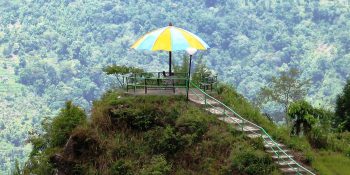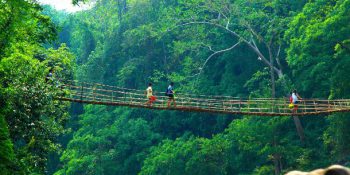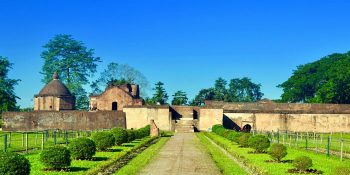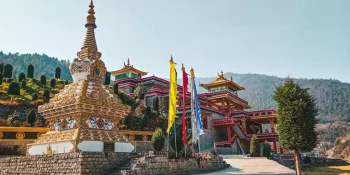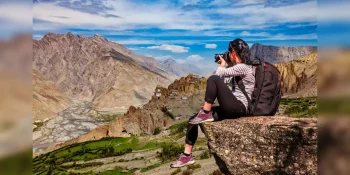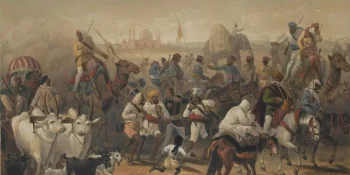The Mughal Gardens of Kashmir stand as timeless testaments to the architectural prowess and aesthetic sensibilities of the Mughal dynasty. Nestled amidst the breathtaking beauty of the Kashmir Valley, these gardens represent a fusion of Persian, Islamic, and local architectural styles, creating paradisiacal landscapes that have captivated visitors for centuries.
One of the most renowned Mughal gardens in Kashmir is the Shalimar Bagh, meaning “abode of love,” commissioned by Emperor Jahangir in 1619 for his beloved wife, Empress Nur Jahan. Spread across 31 acres along the banks of the Dal Lake, Shalimar Bagh is divided into three terraces, each symbolizing a distinct facet of life – the first terrace representing paradise, the second symbolizing the world, and the third terrace signifying the afterlife. The garden’s layout follows the Persian chahar bagh (four-quartered garden) style, with intersecting canals, meticulously manicured flowerbeds, and pavilions that offer panoramic views of the surrounding mountains.
Adjacent to Shalimar Bagh lies the Nishat Bagh, built by Asif Khan, the brother of Empress Nur Jahan, in 1633. Spanning over 46 acres, Nishat Bagh is renowned for its terraced design, with twelve descending levels symbolizing the twelve signs of the zodiac. Each level is adorned with fountains, cascades, and meticulously arranged flowerbeds, creating a symphony of colors and fragrances that change with the seasons. At the highest point of the garden stands the Emperor’s Throne, a marble pavilion offering commanding views of the Dal Lake and the snow-capped peaks of the Pir Panjal range.
Chashme Shahi, or the Royal Spring, is another gem among the Mughal gardens of Kashmir. Built by Emperor Shah Jahan in the 17th century, this garden is famous for its natural spring, whose waters are believed to possess medicinal properties. The garden’s layout is characterized by terraces, cascades, and pavilions, all set against the backdrop of the Zabarwan Range. The pavilions are adorned with intricate frescoes and calligraphic inscriptions, reflecting the grandeur of the Mughal era.
In addition to these major gardens, Kashmir is dotted with several smaller Mughal gardens, each exuding its own unique charm. The Achabal Garden, commissioned by Emperor Jahangir in 1620, is renowned for its cascading water channels and terraced layout. The Pari Mahal, or “Palace of Fairies,” built during the reign of Emperor Shah Jahan, is a splendid example of Islamic architecture, with its terraced gardens and arched pavilions overlooking the city of Srinagar.
What sets the Mughal gardens of Kashmir apart is not just their architectural splendor but also their integration with the natural landscape. The gardens are designed to harness the natural beauty of the Kashmir Valley, with carefully curated vistas that frame the majestic mountains, serene lakes, and lush forests. The Mughal emperors, inspired by the Quranic descriptions of paradise, sought to create earthly paradises that would transport visitors to a realm of beauty and tranquility.
Today, the Mughal gardens of Kashmir continue to enchant visitors from around the world, serving as living testaments to the artistic genius of the Mughal dynasty and the enduring allure of the Kashmir Valley. As visitors stroll through the terraced gardens, inhaling the fragrance of blooming flowers and listening to the gentle murmur of cascading water, they are transported to a bygone era of splendor and romance, where emperors walked amidst gardens that mirrored the celestial beauty of paradise.
